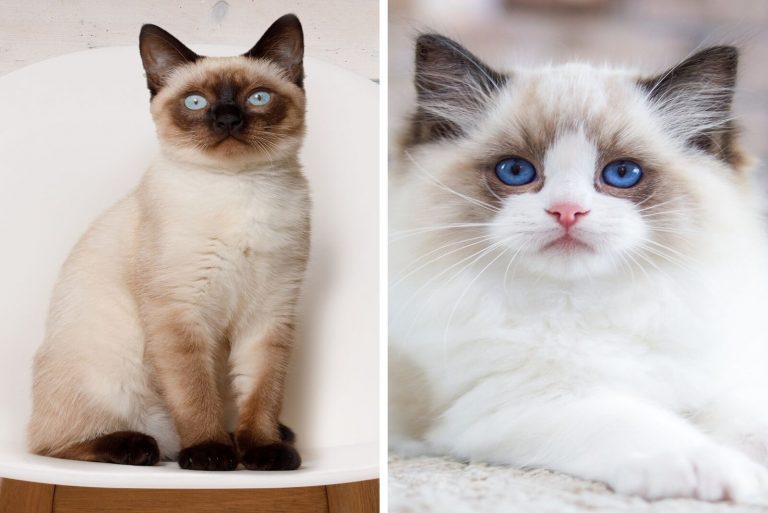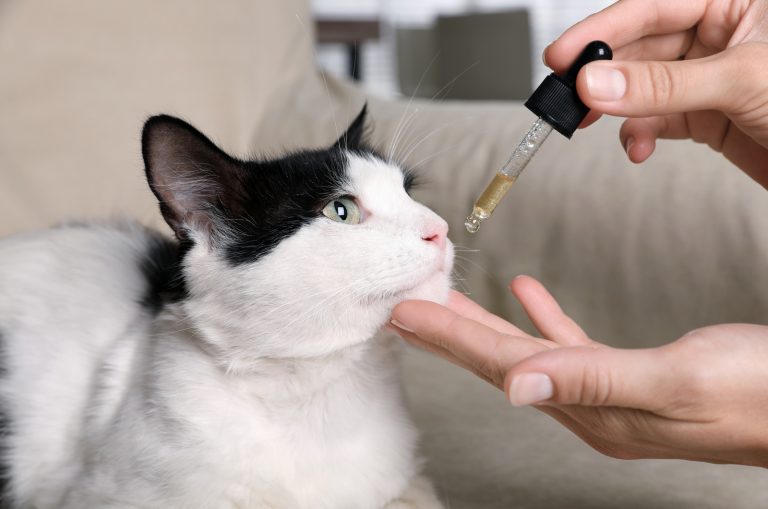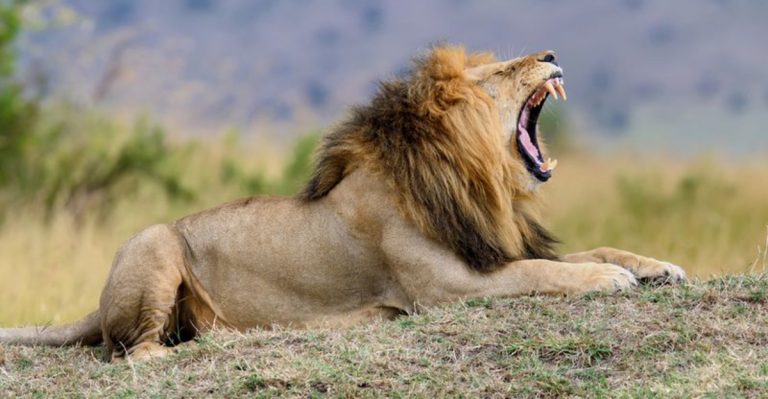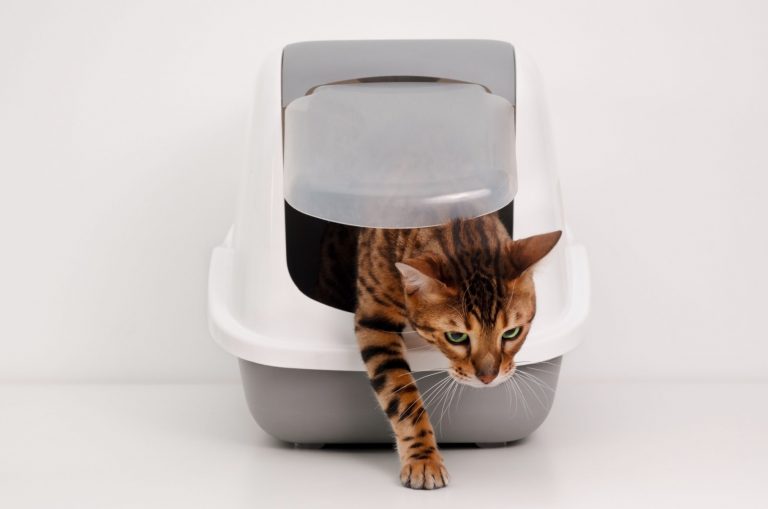Is Baby’s Breath Toxic To Cats? You Need To Know This

A disclaimer: This has nothing to do with a real baby’s breath – the baby’s breath we are talking about here is a plant also known as gypsophila!
You might have seen baby’s breath looking like white or pink clouds in a garden or a field, or used as in bouquets of flowers. Baby’s breath plants are commonly used as cut flowers to add detail to floral arrangements.
It is much-loved by florists and floral artists as it’s very fine and soft, and goes nicely with many other flowers. Baby’s breath is associated with love, innocence, and purity, making it the perfect choice for gifts, wedding arrangements, and baby shower bouquets.
Is baby’s breath toxic to cats? Are cats safe around this commonly-used plant?
Baby’s breath is officially recognized as being non-toxic for cats. However, if cats eat it, they can experience an upset stomach, vomiting, and diarrhea.
So, even though it is not officially toxic, I would personally consider it as mildly toxic because it can cause harmful side-effects if ingested.
Baby’s breath is unlikely to cause any long-term harm to cats, and there is no record of cats dying after ingestion of this plant.
Continue reading to learn more about baby’s breath plants, where your cat might encounter them, how to recognize baby’s breath-poisoning and what to do about it.
Is Baby’s Breath Toxic To Cats?

If you have an outdoor cat and you use baby’s breath as a decorative plant in your garden, you might be concerned about the safety of having these plants close to your cat, so you might ask, is baby’s breath toxic to cats?
The American Society for the Prevention of Cruelty to Animals (ASPCA) lists baby’s breath as non-toxic for cats, dogs, and horses. However, it is mentioned that if ingested, it can cause gastrointestinal upset presenting as vomiting and diarrhea.
So what does this mean? This means your cat is safe around this plant as long as it doesn’t eat it, and even if it does, the consequences will not be life-threatening.
Before going into detail about why exactly this plant causes gastrointestinal upset and what to do if this happens to your cat, let’s explore some basic information about the plant itself.
A Little Bit About Baby’s Breath Plants
Before we look at the cat’s potential reaction to baby’s breath plants, let’s take a look at the popular baby’s breath plants and where your cat may encounter them
What Exactly Is Baby’s Breath?
Over 150 different species of flowering plants are under the genus known as “baby’s breath”, often referred to as Maiden’s Breath.
Scientific name for this genus is Gypsophila, and it belongs to the Caryophyllaceae family of flowering plants (also known as the carnation, or ‘pink’, family).
All members of the genus baby’s breath have the following characteristics:
• Having tiny white or pink flowers that have exactly five petals (the flowers are also the most toxic part of the plant)
• Native to eastern Europe & western Asia
What Plants Belong to the Baby’s Breath Genus?
Check out the scientific names and common names for various species of the baby’s breath genus:
• Gypsophila acutifolia – sharpleaf baby’s-breath
• Gypsophila elegans – showy baby’s-breath
• Gypsophila paniculata – panicled baby’s-breath
• Gypsophila pilosa – Turkish baby’s-breath
As you can see, all plants of the baby’s breath genus are commonly known as baby’s breath and the more popular species have a more detailed name.
Where Are Baby’s Breath Plants Used?
Species of this genus are often used in floristry as part of a flower arrangement or in a bouquet of flowers.
So, which species are we most interested in? Our cats are most likely going to run into the following species: Gypsophila elegans and Gypsophila paniculata because these are the two species most commonly used in flower arrangements (for example in bouquets) and as ornamental plants (those grown in gardens for decoration).
These plants are commonly used either fresh or dried in wedding bouquets as they represent love and purity. You can also see them in bouquets and table decorations for baby showers, as they’re associated with innocence and everlasting devotion.
What Exactly Makes Baby’s Breath Toxic For Cats?
Baby’s breath is considered to be toxic due to the presence of saponins. Now, you might be wondering what saponins are.
Saponins are triterpene glycosides – plant-derived organic chemicals that have a very bitter taste. Due to its unpleasant flavor, saponin, which is used by the plant to deter tiny parasites, also deters larger animals.
By attaching to the cell walls and rupturing them, saponins immediately affect any tissue they come into contact with. Because of this, a cat who eats baby’s breath may experience irritation in their mouth and stomach.
Saponins are known to cause gastrointestinal tract issues in cats that ingest it, although saponins from baby’s breath plants won’t cause life-threatening illness in cats.
Suggested: Is Citronella Safe For Cats? Keeping Felines Safe And Sound
Baby’s Breath Poisoning – The Symptoms

If a cat ingests enough baby’s breath plants, they are likely to experience some unpleasant symptoms. Although the symptoms of baby’s breath poisoning are not life-threatening, they can still cause a lot of discomfort to the unfortunate cat.
Symptoms of baby’s breath poisoning include:
1. Vomiting
As with any other case of poisoning, a cat that ate any part of a baby’s breath plant (but most commonly the flowers) will experience vomiting and nausea.
Although it might sound odd, vomiting is actually a good thing because it means the undigested baby’s breath is removed from the stomach and will not be able to cause any more upset.
The unfortunate cat will most likely start acting differently; not wanting to eat or avoiding physical contact. These are common behavior patterns when a cat is nauseous.
The cat owner needs to pay attention to how much their cat is vomiting. Vomiting means losing liquid, and that can cause severe dehydration, which is a serious medical condition.
2. Diarrhea
In addition to vomiting, diarrhea is the most typical sign that the cat has eaten enough baby’s breath to cause problems in the digestive tract.
Diarrhea is the body’s way of getting rid of unwanted contents, so any irritant or toxin can be quickly expelled from the body.
Just like with vomiting, diarrhea can lead to rapid fluid loss, which can lead to dehydration. Excessive fluid loss is never good and will make the cat even weaker than they already are.
This is why it’s important to make sure the cat drinks water to replenish the fluid that the body has lost. In severe cases, when the cat has been vomiting or having diarrhea a lot and does not want to drink any water, the cat should be taken to the vet.
3. Drooling
The toxin in baby’s breath, saponin, irritates the entire gastrointestinal tract, which includes the cat’s mouth.
As a reaction to this irritation, the cat might start to drool excessively, especially if it has eaten a lot of baby’s breath flowers. Drooling might even be accompanied by foaming at the mouth as well as red or irritated lips.
This drooling is the body’s attempt to get rid of the toxin by washing it away with saliva so it is removed from the body.
4. Loss Of Appetite
Loss of appetite is a common symptom of baby’s breath poisoning and this is perfectly understandable when you consider that the baby’s breath toxin causes gastrointestinal discomfort.
The affected cat will probably refuse to eat, and this may be followed by vomiting. It’s important to keep track of how long a cat has been refusing to eat, as this can lead to health issues.
5. Lethargy
This is a common symptom of almost all diseases, infections, and poisonings. This is because the cat is simply not feeling it’s best and wants to conserve energy for healing and recovery.
Lethargy is when the cat does not want to play, jump around, or interact with the household members.
The cat may be reluctant to eat and drink, preferring to lie down and rest (just like us when we’re sick!).
6. Contact Dermatitis
It is possible for the cat to develop contact dermatitis on areas of the skin that have touched the plant.
The sap of the plant contains the toxin, saponin, and this will most likely cause a red rash if it comes into prolonged contact with the cat’s skin.
You might notice your cat scratching or grooming excessively, which can be a sign of contact dermatitis.
My Cat Ate Baby’s Breath – What Should I Do?

Cats may become poisoned by baby’s breath if they consume it in large quantities.
However, if a cat has only consumed a small number of baby’s breath flowers, this will probably not be enough to cause a major problem.
Your cat may experience stomach discomfort and potentially some vomiting, and mild diarrhea.
On the other hand, if a cat has eaten a larger number of baby’s breath flowers, it might be best to go to the veterinary hospital or at least speak to a vet for some advice.
Consuming a larger number of flowers means a larger amount of toxin in the cat’s system and this makes severe symptoms much more likely.
How Is Baby’s Breath Poisoning Diagnosed?
If you suspect your cat has eaten some baby’s breath, you need to tell the vet.
For example, if you have baby’s breath plants in your garden and you know your cat is curious and might have been tempted to eat it – let the veterinarian know, as this can help narrow down their search for the cause of any illness they may present with.
If you know how much your cat ate and how long ago this ingestion happened, let the vet know that too. Pay close attention to your cat’s symptoms, monitor its condition, and describe the progress to the vet.
The veterinarian will probably want to do a physical examination to determine the overall state of your cat’s health as well as taking some blood samples to get as much information as possible about what your cat is experiencing.
How Is Baby’s Breath Poisoning Treated?
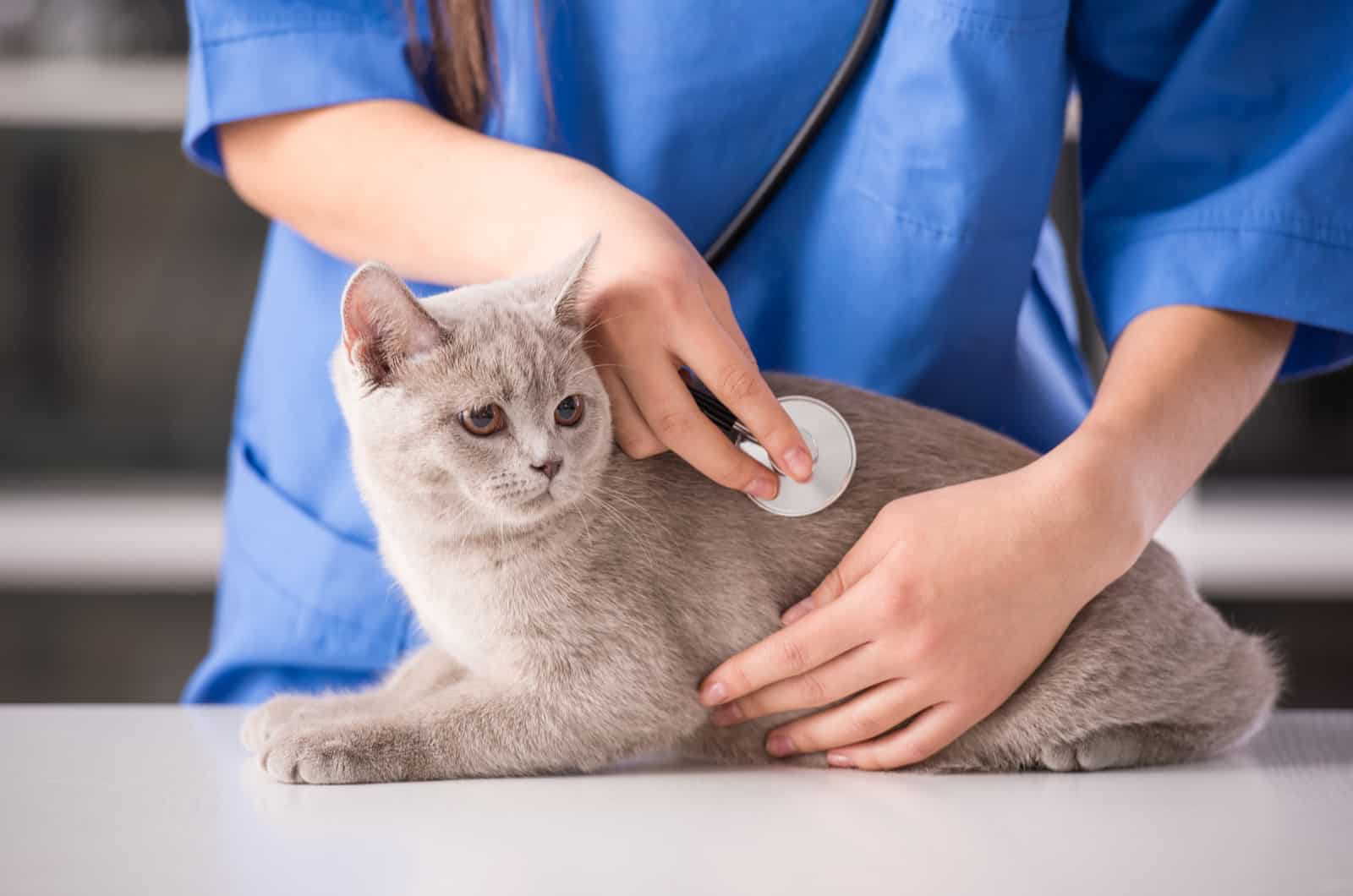
Let’s talk about what happens when a cat experiences the symptoms of baby’s breath poisoning.
It is so important to remember that a cat dying of baby’s breath poisoning is virtually unheard of! Please do not panic if your cat has ingested any part of this plant.
This does not mean that eating baby’s breath plants is completely harmless, especially for cats that have ingested a larger portion of baby’s breath plants or which have other underlying health issues.
Nevertheless, when it comes to treating baby’s breath poisoning, the most important thing is treating the symptoms on time and making sure the toxin leaves the cat’s body.
1. Fluid Therapy
As vomiting and diarrhea are the main symptoms of baby’s breath poisoning cases, it is very likely the affected cat will be dehydrated.
Vomiting and diarrhea cause a cat to lose a lot of fluids. These fluids need to be replaced and that can be done via intravenous fluid (IV) therapy. This requires a catheter to be placed into the cat’s vein and giving them fluids directly.
This extra fluid in a cat’s system will also lead to more urination, so the toxin (saponin) will be removed from your cat’s system more quickly.
2. Inducing Vomiting
One way to get the toxin out of a cat’s body is to make the cat throw up so that the plant (and therefore the toxin) will leave the cat’s system.
This is only effective if the cat hasn’t already digested the plant and absorbed the toxin.
The vet can administer a substance that induces vomiting, and hopefully your cat will get rid of the toxin quickly.
3. Antiemetic Medication
On the other hand, if your cat does digest and absorb the toxin, they will most likely be nauseous, vomiting, and having diarrhea.
In order to battle the cat’s nauseousness, the vet might prescribe antiemetic medication, which are drugs that help reduce nausea and vomiting.
Most of the time, cats with baby’s breath poisoning don’t need any type of medication at all, the symptoms can be managed without veterinary intervention.
4. Close Monitoring
As baby’s breath poisoning is not usually something to be overly concerned about, veterinarians don’t routinely keep these cats overnight in the hospital.
However, close monitoring by the cat owner is important to make sure the cat is getting better.
Will A Cat That Ingested Baby’s Breath Be Fine?
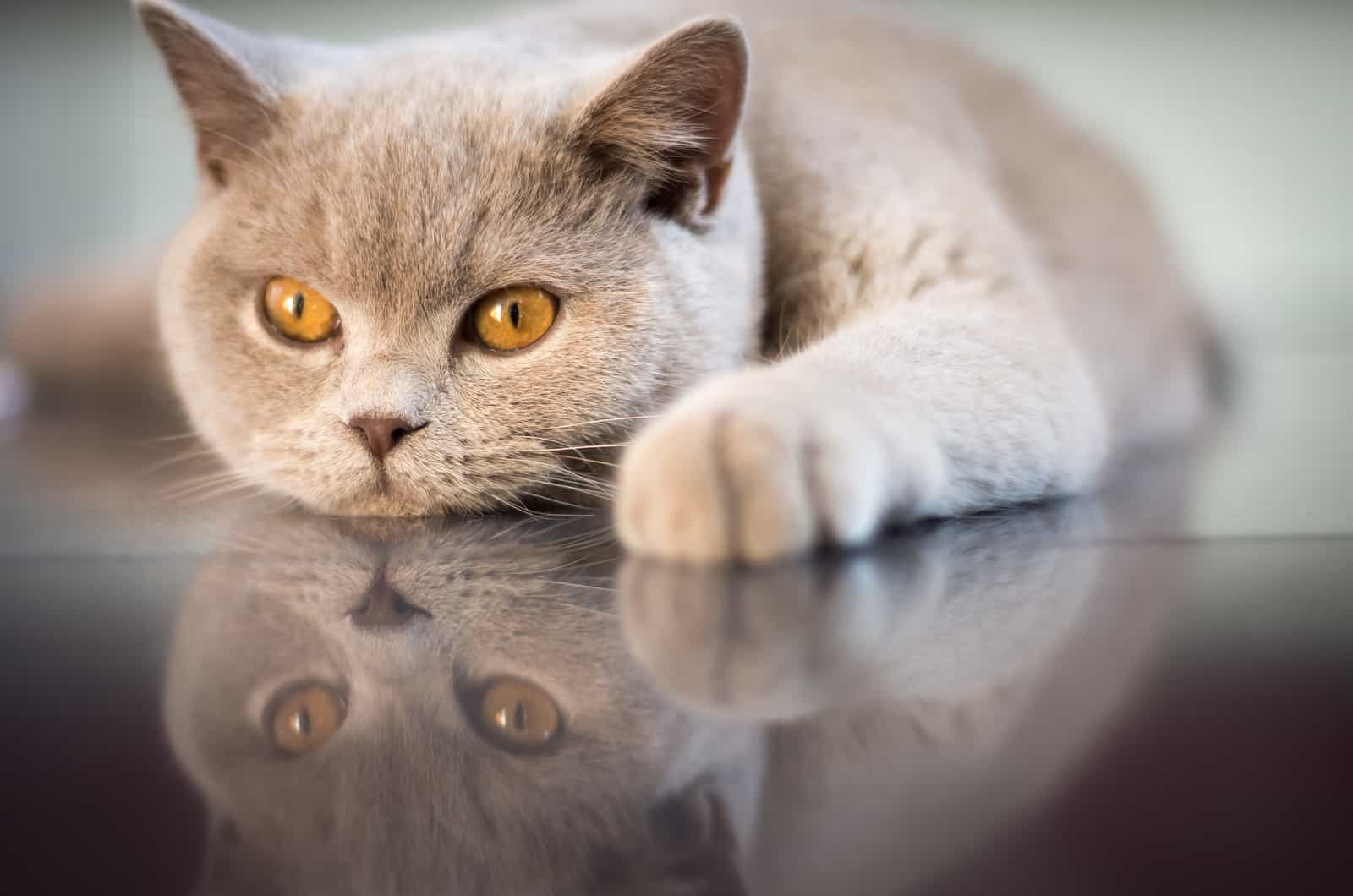
The good news for you (and your cat) is that everything will be okay!
For a few days after the ingestion of baby’s breath, you will need to keep your cat’s diet as basic as possible. Stick to foods that are easily digestible and don’t introduce any new foods that could cause additional discomfort to your cat’s tummy.
You will need to keep an eye on your cat for a few days, just to make sure their appetite and energy levels have returned to normal.
However, if you observe that your cat is not back to normal in a few days, I suggest you visit the vet again, just to make sure your cat’s gastrointestinal tract is not more severely damaged.
Unless they have acquired a secondary issue that needs additional care (for example dehydration), the majority of cats will recover within a few days and won’t need to return to the vet for any further treatment.
Related: Are Sunflowers Toxic To Cats? Learn The “Safe Flowers” List
How Can I Prevent My Cat From Ingesting Baby’s Breath?
If you have a garden with baby’s breath plants and you also have an outdoor cat, you might be wondering how to ensure your cat stays away from these plants!
Luckily, there are a few things you can try in order to make sure your feline friend is safe, such as:
• Enclosing or fencing-off the part of the garden where the baby’s breath plants are growing may keep them safe. This may be hard if your kitty is particularly curious and determined.
• Keeping your cat away from the plants by spraying them with a spray bottle of water every time your cat tries to get close to the plants. The goal is to make the cat learn they should not go near those plants, but some owners may feel that this is unkind to the cat.
• Transfferring your baby’s breath plants to somewhere the cat cannot reach them, such as into hanging baskets or planters your cat cannot access.
If your cat is simply way too curious and stubborn, you can always remove the plants from your garden since, after all, your cat’s safety should always be the number one priority.
Just Briefly: What Are Some Other Plants Cat Owners Need To Be Aware Of?

If you have a curious cat and a garden filled with plants and flowers, you might run into some issues if your cat loves to sneak into the garden and nibble at the plants.
When that happens, the only evidence of your cat’s secret snacking may be changes in behavior, vomiting, or diarrhea.
What can you do about this? Well, first you can learn about which flowers in your garden are toxic for your cat and then replace them with some non-toxic plants.
It is best to swap to pet-friendly plants because any ingested toxins are likely to cause gastrointestinal upset for the unfortunate cats.
In order to prevent any potential tummy aches, make sure your cat does not ingest the following potentially cat-poisonous plants:
• Tulips
• Hyacinths
• Azalea (common houseplant)
• Autumn Crocus, also known as meadow saffron (common ornamental flowering plant)
• Easter Daisy
• Amaryllis
• Easter Lilies (ingestion of any part of the plant can cause kidney failure in cats)
• Cyclamen (flowering plants that are often kept indoors)
• Daffodils
• Peonies
• Oleander (popular outdoor flower, contains cardiac glycoside toxins)
Even if your cat has simply licked one of these plants, let alone ingested one, make sure to keep an eye on your cat and monitor their symptoms so you can take them to the vet if required.
FAQ

Can Cats Eat Baby’s Breath?
Cats absolutely should not consume this plant. Depending on the quantity ingested, the symptoms may vary from a mild stomach ache, to vomiting, diarrhea, and lethargy.
Is Baby’s Breath Toxic To Cats?
Although the American Society for the Prevention of Cruelty to Animals (ASPCA) lists baby’s breath as non-toxic for cats, they also state that ingesting these plants can lead to gastrointestinal upset, vomiting, and diarrhea. So, it can be said that baby’s breath is actually mildly toxic when ingested.
Are Baby’s Breath Flowers Toxic?
Although they are the prettiest part of the plant, the flowers are also the most toxic part.
Most of the baby’s breath plant contains the toxin known as saponin, but the baby’s breath flowers are considered to be the most dangerous part of the plant if ingested.
What Is The Toxicity Of Baby’s Breath?
The toxicity of baby’s breath plants depends on the amount that has been eaten. A few flowers won’t lead to any life-threatening symptoms, but ingesting a relatively large quantity of these flowers can be more dangerous for the pet’s health.
Is Baby’s Breath Pet Friendly?
No, baby’s breath is not pet friendly. This is because ingestion of these plants usually leads to gastrointestinal issues for the pets that ingest it.
Is Baby’s Breath Safe For Cats And Dogs?
Baby’s breath plants are safe for cats and dogs as long as they don’t ingest them. That means these plants are not toxic to smell and it’s okay to be around them – but not to ingest them.
Why Are Cats Attracted To Baby’s Breath?
Although we have no scientific evidence to back this up, it is thought that cats are attracted to baby’s breath due to its scent. Although not everyone finds this distinctive aroma appealing, some cats appear to find it to be so tempting that they will even eat the baby’s breath flowers.
In Conclusion
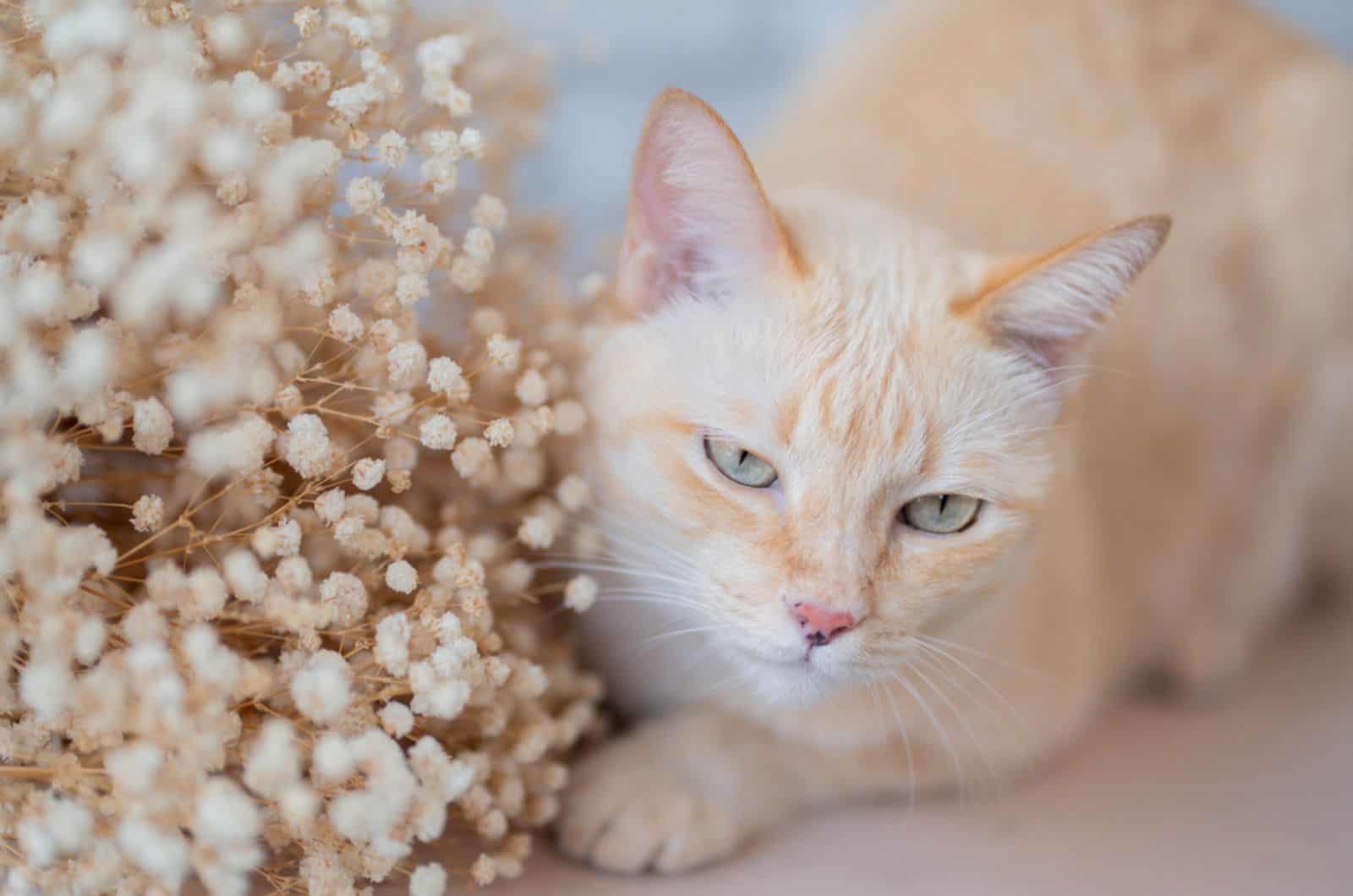
If you were wondering is baby’s breath toxic to cats, now you know the answer.
Let’s have a quick recap of the most important information.
Baby’s breath plants are, according to American Society for the Prevention of Cruelty to Animals (ASPCA), classified as non-toxic to cats.
However, it can cause gastrointestinal discomfort to cats that ingest it, with symptoms including vomiting, diarrhea, drooling, and lethargy.
These plants, native to Eurasia, contain a toxin called saponin, which is a naturally-occurring compound found in many plants. Although the toxin causes irritation to the entire gastrointestinal tract, it does not usually cause any life-threatening illness or disease.
The discomfort caused by baby’s breath poisoning is proportional to the amount of the plant that has been ingested. Essentially, the more baby’s breath your cat eats, the more severe the symptoms are. The flowers are the most toxic part of the plant.
However, most cats do not need veterinary treatment, although they might get dehydrated due to vomiting and diarrhea so they should be monitored carefully by their owners.
If your cat does ingest baby’s breath, keep a close eye on them and their symptoms but do not be overly concerned! Baby’s breath poisoning should not cause any significant damage to your cat’s GI tract.
I hope this article was informative and reassuring; if you have any questions or concerns about your cat or you aren’t happy with their behavior or health after they have eaten a plant, contact your veterinarian for advice.

